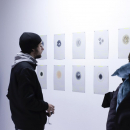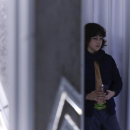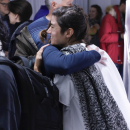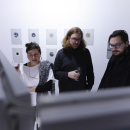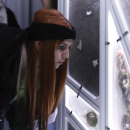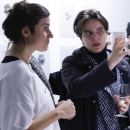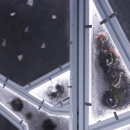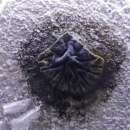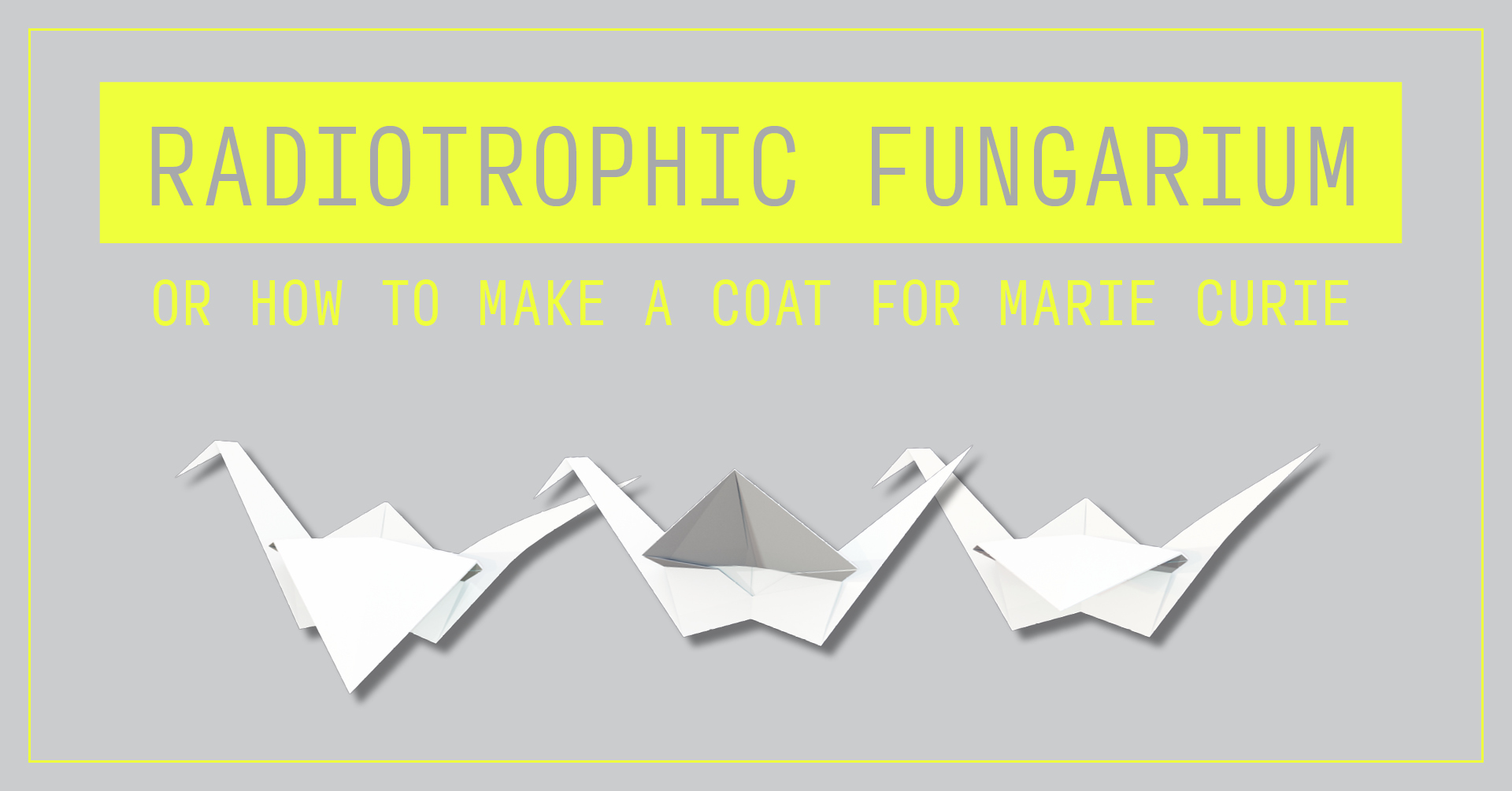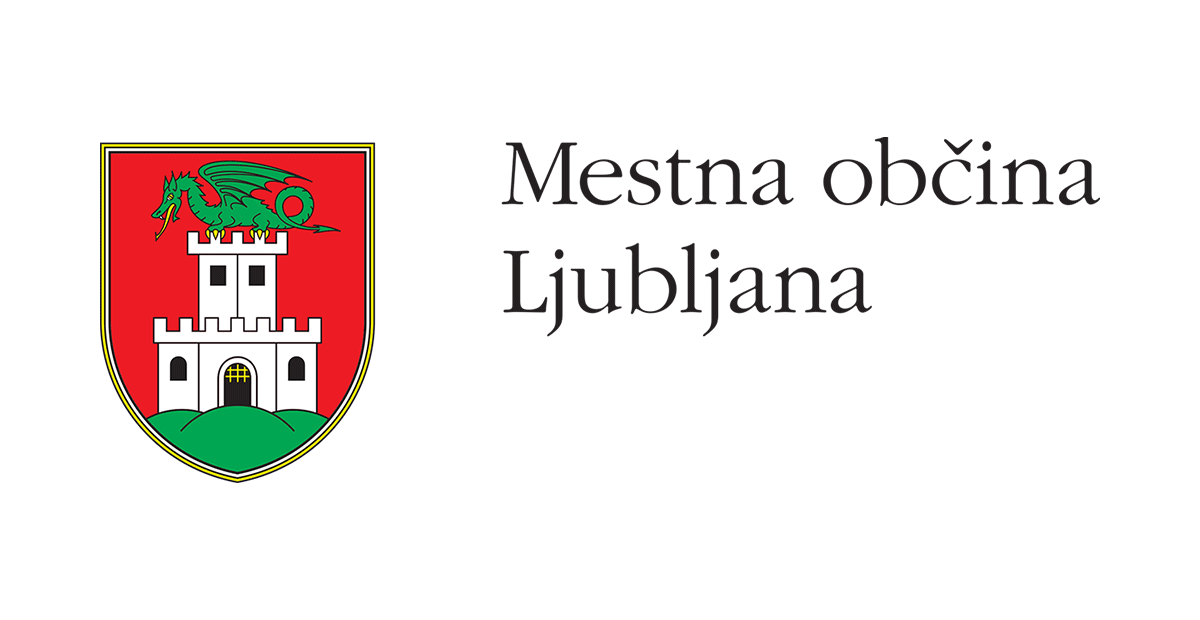Radiotrophic Fungarium Or How to make a coat for Marie Curie
Opening: Thursday, 15 December at 7pm
The exhibition is open every weekday from 16 December to 10 January between 3pm and 7pm.
“Cloth is the body’s first architecture; it protects, conceals and reveals; it carries our weight, swaddles us at birth and covers us in sleep and in death.” – Ann Hamilton
Dear Earthlings,
We hope this note finds you well!
The discovery of radioactivity with the work of Marie Curie and her peers at the beginning of the twentieth century triggered considerable scientific and technological advancements. In parallel, less known histories of legal, social and emotional resilience have been unfolding while vulnerable social groups struggled and are still struggling to survive. After the radiation caused Marie Curie’s physical decline many others followed into the radioactive forest, each of them providing lessons for the ones that survived. In 1928 the Radium Girls, women factory workers who painted watch dials with self-luminous paint, began their long fight for workers’ rights in court against their employers, who neglected to inform them about the risks of licking brushes dipped in radium paint. In 1945, black rain drops of radioactive ash fell on Sadako Sasaki in Hiroshima. Ten years later, Sadako began her quest to fold thousand paper cranes in hope for survival, which lasted until the last day of her life. Since 1950 Diné also known as Navajo uranium miners have been unwillingly practising social and economic resilience, while deadly radioactive isotopes curiously named radon daughters continue to cause cancer in their lungs.
In 1991, five years after the nuclear explosion in Chernobyl, twelve species of radiotrophic fungi were found in the number four reactor, all of which produce melanin. Melanized fungi metabolise radioactivity into energy and thrive in one of the most toxic environments known to human beings. Just a few months after being evacuated by the authorities from the Chernobyl exclusion zone, a community of elderly women returned to the only home they knew. The Chernobyl Babushkas are still living in the zone today, despite the dangerous levels of radiation. For the Babushkas, the force of belonging has been stronger than the fear of radioactive threat. In 2018, the radiotrophic fungi were sent to the International Space Station for the first time to be tested as shields against radiation.
Radiotrophic Fungarium is a homage to humans and other-than-humans who have suffered and gave their lives to teach us about life in radioactive toxicity. While we travel through the history forest, each path tells us a different history. As we move through the colliding and entangled human and fungal timespaces and perspectives, we follow one of the radioactive trajectories in order to forage knowledge and assemble stories of protection. The Radiotrophic Fungarium serves as a book of care linking stories from the past into networks for dire futures. Imagine fungi forming shields against radiation, growing into coats, face masks, blankets, scarfs and alike to provide protection for those who have been sacrificed by the patriarchal capitalist system and nuclear colonialism. Climate change and nuclear threat are imminent and a past of radioactive harm has since been detonated. What is there to learn and how to proceed?
Radiotrophic Fungarium is an ongoing research, interested in ways of protecting human and fungal lives against radioactive and UV radiation harm by developing symbiotic interspecies relationships that might grow into shields and shelters as our climate changes.
Stay safe, with love,
Eona
Saša Spačal
Saša Spačal MA [she/her], a postmedia artist, merges living systems research with contemporary art, emphasising the interconnectedness of the environment-culture continuum within planetary metabolisms. Her artistic endeavours include developing caring biotechnological methodologies and interfaces that engage with both organic and mineral soil agents. In parallel, she explores the fragility of posthuman scenarios, intricately weaving mechanical, digital, and organic logics within the realms of contemporary biopolitics and necropolitics.
Her works were presented at venues such as ZKM | Center for Art and Media Karlsruhe [DE], Ars Electronica [AT], Centre de Cultura Contemporània Barcelona – CCCB [ES], Laboratoria Art & Science Foundation / New Tretyakov Gallery [RUS], National Art Museum of China [CHN], Museum of Contemporary Art Metelkova [SI], Onassis Cultural Centre Athens [GR], Transmediale Festival [DE], GHMP Prague City Gallery [CZ], Museum and Galleries of Ljubljana [SI], Museo Extremeño e Iberoamericano de Arte Contemporáneo [ES], Perm Museum of Contemporary Art [RUS], Chronos Art Centre [CHN], Museum of Contemporary Art Zagreb [CRO], Museum of Contemporary Art Vojvodina [SRB]. She received awards and nominations Ars Electronica Starts Prize [2021], Japan Media Art Award [2020], New Technological Art Award [2019], New Aesthetica Prize [2020], Prix Cube [2015] and Prix Ars Electronica [2015].
Kaitlin Bryson
Kaitlin Bryson is an artist working on environmental and social justice issues. Her artistic practice and activism focuses on biological and metaphysical applications of healing to respond to the pervasive harms happening in the world. Bryson works primarily with fungi as material, metaphor and collaborators for her artworks.
She holds an MFA in Art and Ecology from the University of New Mexico and currently lives and works in the western United States. SBryson has received support from the Lannan and Andrew W. Mellon Foundation(s) to create ecologically, remediative artworks nationally and internationally. In 2019, Bryson co-founded The Submergence Collective, an environmental art collective focused on projects that envision a more collaborative, creative, hopeful, and ecologically connected future for our human species and the rest of the living world.
